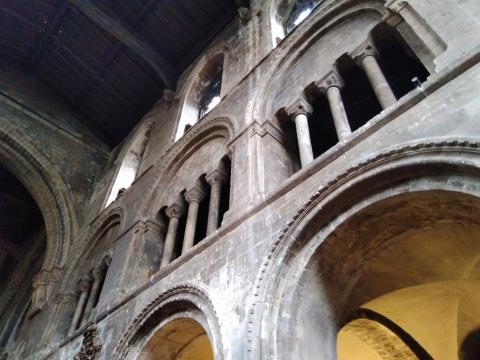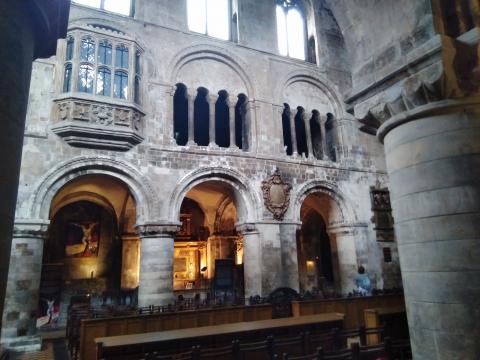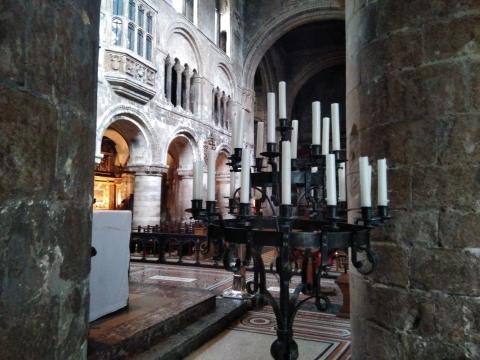St Bartholomew the Great

This week, I had great pleasure calling at the church of St Bartholomew the Great. This word great is used to distinguish it from the close-by Bartholomew the Less, but Great St Bart’s deserves its name for being such a great survivor. There are few medieval churches left in the City of London. Only five of them were spared the Great Fire of 1666, while Nazi bombs blew to smithereens many others. In addition, it survived the Reformation, the Commonwealth, the ambitions of Victorian re-designers as well as all the usual fires and domestic catastrophes that a thousand years’ worth of existence is likely to produce. Those stout Romanesque pillars and rounded arches so beloved by twelfth-century masons bespeak a solidity and permanence that the more delicate traceries and transoms of later styles cannot match.

In our own time, the Church of God, that earthly manifestation of the cosmic community of Christ’s redeemed people, suffers on all sides. From the vicious persecution of Arab dictators and Communist officials, to the West’s materialistic indifference and liberalistic theology, the Church reels and wobbles. Yet still she stands, still she grows, still she remains. As Samuel Stone’s famous hymn declares:
Tho' with a scornful wonder
men see her sore oppressed,
by schisms rent asunder,
by heresies distressed,
yet saints their watch are keeping;
their cry goes up, "How long?"
and soon the night of weeping
shall be the morn of song.
Bartholomew the Great is not a church in which I would seek to spend my every Sunday, but it serves as a great reminder that no matter what fashion and distraction comes along, no matter how perilous the times and grating the apostasy, the Church, Christ’s Bride, will outlive the lot.
Then one of the seven angels who had the seven bowls filled with the seven last plagues came to me and talked with me, saying, “Come, I will show you the bride, the Lamb’s wife.” Revelation 21:9, NKJV

- Log in to post comments


 Sunday Worship 10.45am & 6.00pm
Sunday Worship 10.45am & 6.00pm